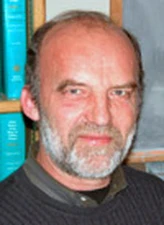Dennis V. Kent

The 2006 Petrus Peregrinus Medal is awarded to Dennis V. Kent for his fundamental contributions to our knowledge of the Earth’s magnetic field in the past and for his leadership in palaeomagnetism.
Professor Dennis V. Kent is expert in the study of the magnetism of rocks, and in its application to an amazingly wide range of problems in the Earth Sciences: magnetostratigraphy, chronostratigraphy, marine magnetic anomalies, history of the geomagnetic field, and tectonics. Current interests include Cenozoic and Mesozoic magnetostratigraphy and geomagnetic polarity time scales, paleoclimatology, paleogeography and tectonics of the Pangea supercontinent, paleofield intensity variations, and the magnetic recording properties of sediments and oceanic basalts.
He excels because of his mastery in the laboratory and because of the often novel and imaginative manner in which he applies his knowledge. He has authored or co-authored 200 publications and was cited by Science Watch as having the second highest citation index worldwide among solid Earth scientists.
He has demonstrated, for example, that the great arc of the Appalachians is a result of bending during the late stages of the Appalachian Orogeny, and his fact-based advocacy of the mobility of the various components within Pangea is vital to any understanding of late Paleozoic geology.
A seminal contribution has been his work on the geomagnetic polarity time scale for Jurassic and later time (< 175 Ma), using a reevaluation of marine magnetic anomalies, which led to the development of a new Chron nomenclature now in use, and an integrated magnetobiochronologic timescale for the last 80 Myr.
He has produced seminal work on a complete magnetic stratigraphy for the Triassic Newark System in New Jersey which required the drilling and measurement of 7 km of sediment core, and he has subsequently correlated other late Triassic basins of North America to the Newark System, through magnetic stratigraphy, astrochronology and radiometric dates. His recent milestone paper, with Lisa Tauxe, in Science corrects late Triassic latitudes for continents adjacent to the North Atlantic using a new field model.
He has demonstrated that the variation of the amplitude of the Central magnetic anomaly (< 800 kyr) across strike is caused by variations in the strength of the main geomagnetic field and along strike to variations in mineralogy. His work on the magnetism of marine cores has yielded a data set that is widely used in models of the Earth’s magnetic field.
Dennis V. Kent is a fellow of GSA, AGU and AAAS, an Allan Cox lecturer and GSA and VMSG medallist, and a member of the National Academy of Sciences, and give evidence of his excellent work in magnetism in the geosciences.
